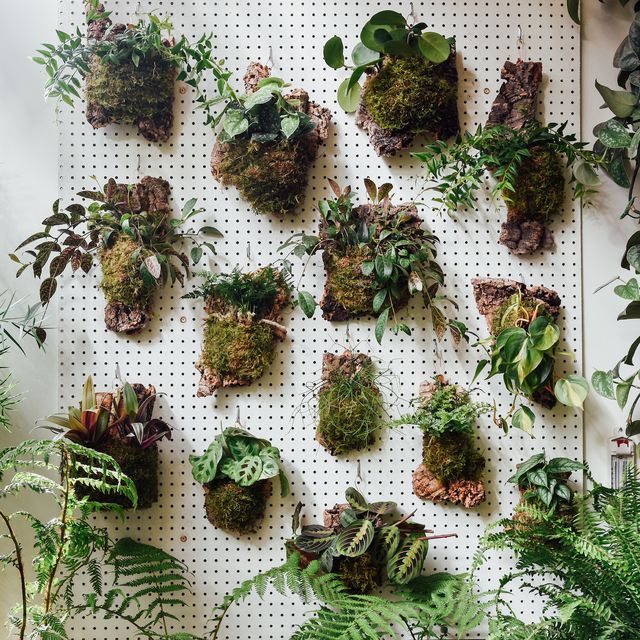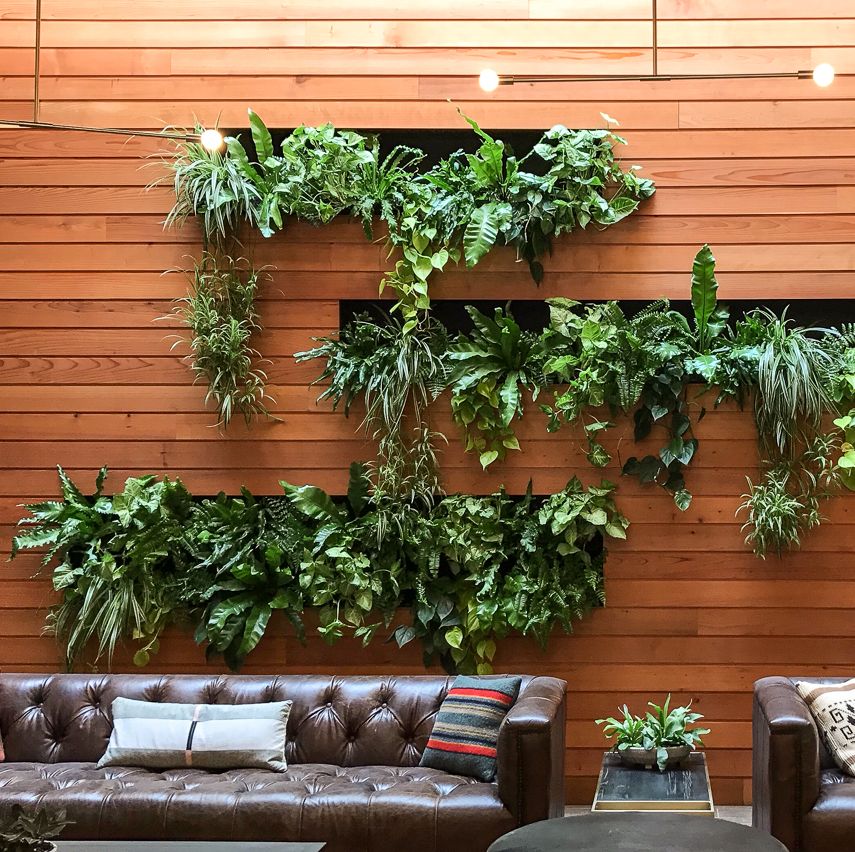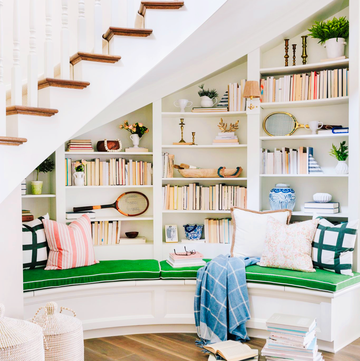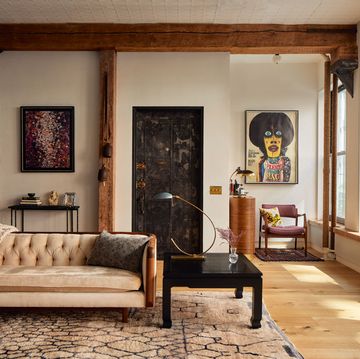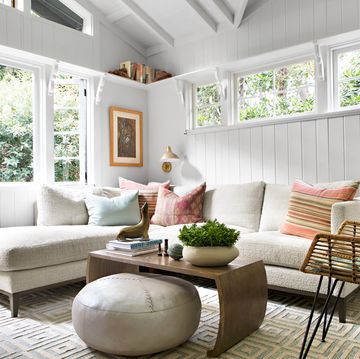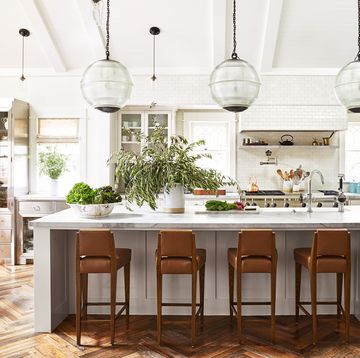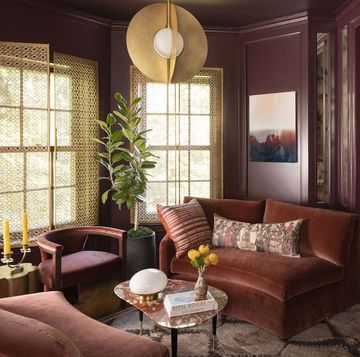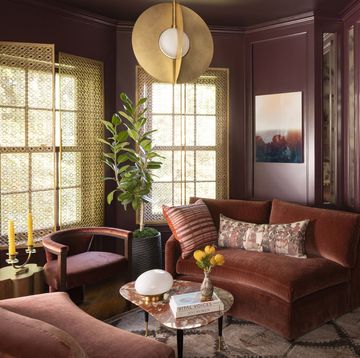If you’re as in love with plants as we are, you’ve probably often thought about how gorgeous your home might be with an entire wall full of them—and trust us, we get it. A living wall is such a gorgeous addition to a home, and can even replace a gallery wall if you’re so inclined. Talk about making a statement.
However, as beautiful as a vertical garden might look (especially in a cramped city apartment where horizontal space is limited), it’d suit you well to be aware of your limitations. After all, looking after one plant is hard enough, right? But if you’re hell-bent on having one, we’re here for you. After consulting plant experts from all over, we created a list of the top considerations to keep in mind while designing your own living wall—no green thumb required.
1. Design for your space.
“I think the biggest mistake people make when they’re planning a living wall is that the need for chic design overshadows the needs of the plants themselves,” explains Jesse Waldman of Pistils Nursery, a speciality plant shop in Portland, Oregon. For instance, if your first choice location for your living wall doesn’t get enough light, you’d be wise to pick another space to prevent your plants from dying Or if it’s too close to the AC unit, leading to unnecessary levels of humidity, you'll want to specify certain plants.
“Once you realize the actual conditions of your wall, you’ll be able to pick your plants much easier,” says Waldman. For instance, if your wall gets a lot of light, cacti and succulents will be much happier, but if the space is humid and damp, consider tropical plants instead.
2. Pick your plants carefully.
Another huge factor is grouping various plants together—after all, you need them to coexist happily. “Mixing plants that do not have the same care requirements will ruin all the work that came into designing the living wall,” explains Erin Marino of online plant shop The Sill. “Essentially, whatever plants you choose for your living wall are going to occupy the same space, so they should require the same care. You want to pick plants that thrive with the same levels of light, temperature, and watering routine.”
While Marino recommends easy-care plants like pothos, you could absolutely try a few more complicated combinations like ferns or spider plants—just make sure they have the same watering schedule and light requirements, and you’re okay.
3. Consider the space between each plant.
Realize that your living wall is exactly that—living. Therefore, it’s going to change and grow with time, and you have to realize that right at the beginning of the installation process itself.
“Don't over pack the planters,” advises Marino. “Make sure to provide your plants space to grow into. After all this work, you don't want to have to change out the plants after six months of growth.” She also recommends that the types of plants you pick should create such an effect that the planters aren’t as obvious—trailing options like pothos and philodendron are ideal, according to Marino.
4. Know your personality type.
“I think you really need to realize a few things about living walls before you have one in your home,” says Dane Horst, founder of Los Angeles plant shop Folia Collective. “With a living wall, it’s pretty much guaranteed that some plants will fare better than others, and you’ll have a fair time pruning and maintaining the living wall—about a couple of hours per week, depending on the plants you use, I would say.”
If you’re a perfectionist and require every plant in your wall to look absolutely top-notch at all times, Horst admits a living wall might not be for you. “These plants will pretty much grow as they want, and you’ll have to be okay with that,” she insists. It’s also important to realize you’ll have to swap out plants as and when they die, so maintenance can be more time than you would normally spend if you were focusing on just a single plant.
5. Figure out your watering system.
If watering your wall often and planning to replant seems like too much work for you, all hope is not lost… you’ll just have to spend a little more money to get a living wall system professionally installed.
“We like modular pieces (like the WallyGro system) that can work as standalone pieces or in large groupings,” says Waldman. “If you choose a system like this, then once you get the hang of caring for pieces in a self-watering or integrated watering system, you can easily expand.” These kinds of systems are generally lower-maintenance, but they do require professional assembly so that you don’t end up with mold all over your plants (not so beautiful, right?). However, Horst insists that the initial investment is well worth the ease that comes with it—”It just makes a living wall so much easier to care for,” she insists.
6. Don’t forget the mounts.
Picking mounts that go with the aesthetic of your home is vital to making sure that your living wall complements your home, rather than look completely out of place. Luckily, there are several options to choose from these days, from wood and cork to clay and metal.
“We often recommend a grouping of mounted plants as a quick and easy alternative to modular living wall systems,” says Waldman. “Many epiphytes (plants that grow on other plants) can be mounted to boards or cork pieces with moss, requiring little root space to thrive. A mixture of staghorn ferns on various sized wood boards or vining tropicals on cork provides plants with both upright and cascading growth habits. Part of the benefit here is that these pieces are watered individually, so it's a bit easier to attend to the needs of each individual plant.”
However, you also need to make sure that for these kinds of walls, your measurements have to be totally exact: “Measure twice, mount once,” says Rebecca Bullene, founder of Brooklyn-based plant store Greenery NYC. “Before you start drilling anchors in the wall, plant your wall on paper and measure it out. For a hand-watered wall like this one, you'll likely need to water once a week—so either keep your step ladder handy, or mount planters where you can reach them.”
Follow House Beautiful on Instagram.
